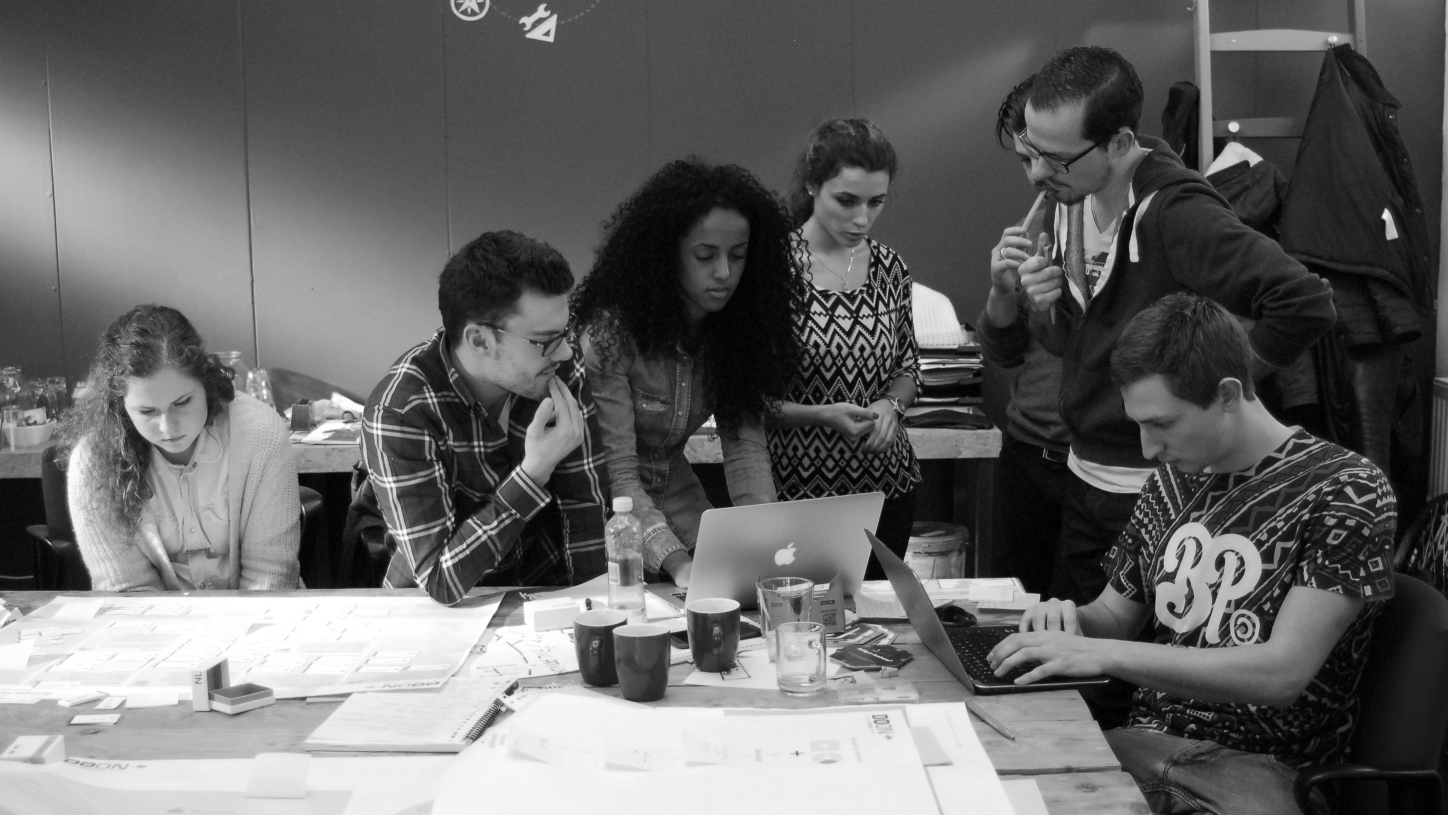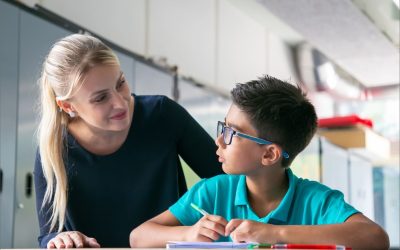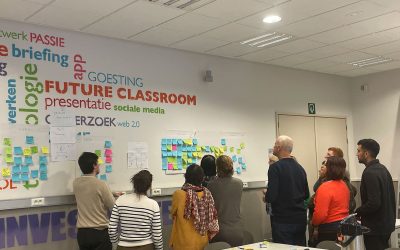In today’s rapidly changing world, traditional educational methods are often challenged to keep up with the evolving needs of society and the job market. As a result, innovative educational approaches, such as agile methodologies and design thinking, are being explored to enhance learning experiences and better prepare students for the real world. In our next blog post with European Agile practitioners, we interview Berry Groenendijk, an Innovation Coach from DOON, a Dutch cooperative focused on bridging the gap between education and the business world. Compared to the previous interviews, we’ll explore how agile methods can be applied in more traditional educational settings, specifically by making use of hackathons as a new learning format, to foster collaboration, creativity, and real-life problem-solving skills among students.
Agile principles are woven throughout the hackathon. We coach teams to conduct small sprints. This encourages students to discover their interests and strengths, fostering a sense of ownership over their work and promoting an inclusive and dynamic learning environment.
About DOON and Berry Groenendijk
Q: Berry, can you tell us about yourself and DOON?
A: Sure, I’m Berry Groenendijk, part of DOON. DOON is a cooperative of independent innovation coaches working at the intersection of education and business. Our mission is to facilitate collaboration between young people on real-life challenges, address societal issues and promote meaningful learning. We primarily work with young people aged 12-25, but these principles also apply to lifelong learning in the business world.
My background is in chemical engineering, and I later transitioned into an IT role in the publishing industry. I’ve been involved in many projects, initially using the traditional Prince-2 project management methodology. However, I found my calling when agile methodologies emerged, emphasizing teamwork, two-way leadership, and a focus on the end user.
The value of Agile in education
Q: What do you see as the value of agile for education and students? Why should schools embrace this approach?
A: I believe several aspects of agile are valuable for education, teachers, and students. First and foremost, agile emphasizes teamwork and collaboration, recognizing that complex problems cannot be solved alone. This collaborative approach is valuable for student and teacher teams, as teaching can often feel like a solitary profession.
Agile also encourages individuals to take the initiative and responsibility for their work, driven by intrinsic motivation. When students are given the freedom to choose their tasks and are placed in the proper context, they become more engaged and motivated. This autonomy fosters a strong foundation for learning and personal growth.
Hackathons and Agile in education
Q: What is a hackathon, and how do you incorporate agile methodologies?
A: A hackathon is an event where teams of students from diverse backgrounds collaborate on real-world challenges from businesses or social causes. In our hackathons, which usually span three days, students explore the challenge, brainstorm solutions, and choose a solution to develop and create a prototype. We emphasize not only coming up with ideas but also turning those ideas into tangible products that can be tested and improved based on feedback.
Agile principles are woven throughout this process, combining agile and design thinking approaches. During the prototyping phase, we coach teams to conduct small sprints, allowing them to work on tasks independently and then reconvene to discuss and reflect on their progress. This encourages students to discover their interests and strengths, fostering a sense of ownership over their work.
Student and teacher experience with Agile
Q: How do students react to agile methodologies, especially if it’s their first encounter?
A: When first introduced to agile, students often need time to adjust. Initially, they might be hesitant, unsure if they can take control of their work and make decisions. However, once they gain confidence in their autonomy, they become more engaged and proactive in learning.
Adopting an agile coaching approach can be a transformative experience for teachers, but it can also be a difficult adjustment at first. Letting go of control can be a challenge, but it doesn’t mean abandoning accountability altogether. Once teachers grasp this distinction, they recognize the benefits of coaching and guiding students rather than merely directing them. Agile methodologies can potentially foster a more inclusive and dynamic learning environment.
However, becoming an effective coach takes practice and experience. It often involves unlearning habits teachers have honed over years of teaching, which can be a continuous challenge for teachers and us. Nonetheless, the rewards of this approach can be significant for both teachers and students, leading to more engaged, independent, and motivated learners.
Agile in the classroom
Q: How can teachers apply agile principles in their classrooms?
A: Teachers can start by creating a collaborative and interactive classroom environment. Encourage students to work in teams, share ideas, and collectively solve problems. Implement agile tools such as Scrum boards, which visually display tasks, goals, and progress, fostering transparency and communication within the group.
Another essential aspect of agile is the iterative process of learning. Teachers can break lessons into smaller chunks or “sprints” and regularly gather student feedback. This allows for continuous improvement and adjustment of teaching strategies, ensuring students are engaged and learning effectively.
We are already witnessing the adoption of agile mindsets in schools, such as the Technasium schools. This network of over 100 schools offers a project-based curriculum incorporating agile working principles. Students at Technasium schools learn through hands-on experience, collaboration, and experimentation, mirroring the real-world challenges and opportunities they will encounter in their future careers. By embracing agile methodologies, these schools prepare students to be adaptable, resilient, and effective problem-solvers, essential skills in today’s fast-paced and constantly changing world.
Agile and lifelong learning
Q: How can agile methodologies contribute to a mindset of lifelong learning?
A: Agile methodologies are rooted in continuous improvement and learning. By embracing the agile mindset, students become more open to learning from their experiences, reflecting on their successes and failures, and seeking growth opportunities. This attitude towards learning extends beyond their school years and into their professional and personal lives, fostering a culture of lifelong learning.
Moreover, as agile methods become increasingly relevant in the business world, students familiar with these practices will be better prepared for the workforce and able to adapt to changing job markets and industries.
Final thoughts and advice
Q: What advice do you have for educators looking to incorporate agile methodologies into their teaching practices?
A: Start small and experiment. Introduce agile principles and practices gradually, observing how they impact the learning environment and student engagement. Be prepared to make adjustments and learn from the process. Don’t be afraid to let go of some control and allow students to take responsibility for their learning.
Also, seek collaboration and support from colleagues, as implementing agile methods can be challenging yet rewarding. Share your experiences, learn from others, and embrace the agile mindset of continuous improvement.
Embracing agile formats such as hackathons and iterative learning, educators can create dynamic and engaging learning environments that better prepare students for the challenges of the 21st century. As Berry Groenendijk has shown through his work with DOON, the agile mindset benefits students and promotes a culture of lifelong learning and continuous improvement for educators and professionals alike, and can find its place both in traditional as non-traditional schooling context.




0 Comments